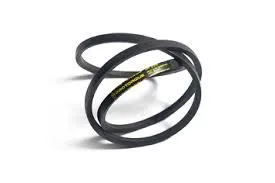- Arabic
- French
- Russian
- Spanish
- Portuguese
- Turkish
- Armenian
- English
- Albanian
- Amharic
- Azerbaijani
- Basque
- Belarusian
- Bengali
- Bosnian
- Bulgarian
- Catalan
- Cebuano
- Corsican
- Croatian
- Czech
- Danish
- Dutch
- Afrikaans
- Esperanto
- Estonian
- Finnish
- Frisian
- Galician
- Georgian
- German
- Greek
- Gujarati
- Haitian Creole
- hausa
- hawaiian
- Hebrew
- Hindi
- Miao
- Hungarian
- Icelandic
- igbo
- Indonesian
- irish
- Italian
- Japanese
- Javanese
- Kannada
- kazakh
- Khmer
- Rwandese
- Korean
- Kurdish
- Kyrgyz
- Lao
- Latin
- Latvian
- Lithuanian
- Luxembourgish
- Macedonian
- Malgashi
- Malay
- Malayalam
- Maltese
- Maori
- Marathi
- Mongolian
- Myanmar
- Nepali
- Norwegian
- Norwegian
- Occitan
- Pashto
- Persian
- Polish
- Punjabi
- Romanian
- Samoan
- Scottish Gaelic
- Serbian
- Sesotho
- Shona
- Sindhi
- Sinhala
- Slovak
- Slovenian
- Somali
- Sundanese
- Swahili
- Swedish
- Tagalog
- Tajik
- Tamil
- Tatar
- Telugu
- Thai
- Turkmen
- Ukrainian
- Urdu
- Uighur
- Uzbek
- Vietnamese
- Welsh
- Bantu
- Yiddish
- Yoruba
- Zulu
Jul . 31, 2024 23:24 Back to list
Understanding the Importance of Engine Fan Belts in Vehicle Performance and Longevity
Understanding the Engine Fan Belt Its Importance and Maintenance
The engine fan belt, often referred to as the serpentine belt, is a crucial component of modern automobiles. Though it may seem like a simple rubber belt, it plays a vital role in the overall functioning of the engine and various auxiliary systems. Understanding its function, importance, and maintenance can help vehicle owners ensure optimal performance and prevent costly repairs.
What is the Engine Fan Belt?
The engine fan belt is a long, flexible belt that is made from rubber and reinforced with fibers for added strength. It is responsible for connecting various engine accessories to the crankshaft, allowing them to operate. This typically includes the alternator, power steering pump, air conditioning compressor, and, in older models, the engine's cooling fan. The belt wraps around these components, facilitating the transfer of mechanical energy generated by the engine.
Importance of the Engine Fan Belt
1. Cooling System One of the primary functions of the engine fan belt is to drive the cooling fan, which keeps the engine from overheating. The cooling system relies on the fan to circulate air through the radiator, enabling the vehicle to maintain an optimal operating temperature. A worn or damaged belt can lead to overheating and potentially catastrophic engine failure.
2. Electric System The alternator, which charges the vehicle's battery and powers the electrical systems when the engine is running, is also driven by the fan belt. If the belt fails, the alternator will not function, leading to a drained battery and loss of electrical power, which can immobilize the vehicle.
3. Power Steering and Air Conditioning Additionally, the fan belt often powers the power steering pump and the air conditioning compressor. A malfunctioning belt can result in difficulty steering and loss of climate control, which can be particularly inconvenient and unsafe.
Signs of a Worn Engine Fan Belt
Preventive maintenance is key to ensuring the longevity and efficiency of the engine fan belt. Here are some common signs that indicate it may be time to inspect or replace the belt
engine fan belt

- Squeaking or Chirping Noises If you hear unusual noises coming from the engine compartment, especially during startup or when idling, it could be a sign of a loose or worn belt.
- Visible Cracks or Wear Routine visual inspections can reveal cracks, fraying, or glazing on the belt's surface. Any visible damage warrants immediate attention, as it can lead to belt failure.
- Overheating Engine If the temperature gauge rises above normal levels, it could indicate that the cooling fan is not functioning properly due to a faulty belt.
- Loss of Power Steering or Air Conditioning Difficulty steering or a sudden loss of cold air can be symptoms of a malfunctioning engine fan belt, given that these systems often rely on the belt for operation.
Maintenance and Replacement
To extend the life of the engine fan belt, vehicle owners should consider the following maintenance tips
- Regular Inspections Check the belt for signs of wear and tear during routine maintenance checks, ideally every 30,000 to 50,000 miles, or as recommended in the vehicle owner’s manual.
- Proper Tension Ensure that the belt is properly tensioned. A belt that is too loose can slip, while one that is too tight can cause premature wear on components.
- Follow Manufacturer Recommendations Always follow the manufacturer’s guidelines regarding replacement intervals and specifications. Different vehicles may have specific requirements based on engine design.
In conclusion, the engine fan belt is an integral part of a vehicle’s functionality, impacting everything from engine cooling to electrical systems. Regular inspection, maintenance, and timely replacement can help ensure that this seemingly small component continues to perform its vital role, contributing to the overall reliability and longevity of the vehicle. Neglecting the fan belt can lead to a cascade of issues, making it essential for vehicle owners to remain vigilant and proactive.
-
Upgrade Power Steering Pump Belt for Smooth, Quiet Operation
NewsAug.27,2025
-
Precision Timing Belt & Chain: Engine Performance & Durability
NewsAug.26,2025
-
Precision Lathe Drive Belts: Durable & Reliable Performance
NewsAug.25,2025
-
84.5 Serpentine Belt: Durable & Precision Fit for Your Engine
NewsAug.24,2025
-
Premium Ribbed Drive Belts for Quiet Power Transmission
NewsAug.23,2025
-
High-Performance Vehicle Timing Belt for Engine Precision
NewsAug.22,2025

